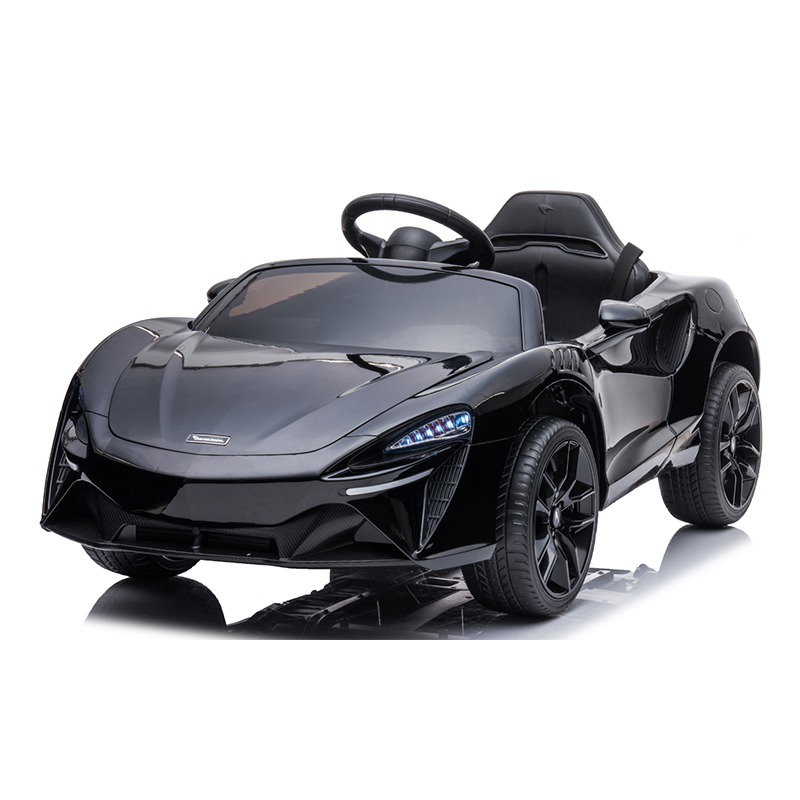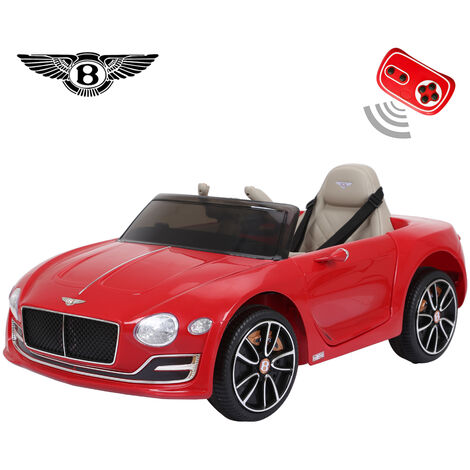Excellent Ideas For Deciding On Kids Ride On Cars
Wiki Article
What Is The Best Way To Choose A Ride On Car For A Toddler Or A Teen Child?
Consider the following factors when buying a ride-on vehicle for your child's age, size, developmental stage. All of these are crucial in ensuring that it is suitable and safe for them. What should you consider when considering these aspects - Age
They are specifically designed specifically for toddlers. They have basic controls, a design that is stable, and a steering wheel or button. Pick cars that have large bases for greater stability.
Older children (3+ Years) - As your child gets older and more experienced, they will be able to operate more advanced vehicles with additional options and control. Consider cars with adjustable seats, higher weight capacities, as well as more interactive features such as working lights, sounds, and music. To ensure safety, look for cars that have an variable speeds or parental controls to meet the needs of different skill levels.
Size
Height and weight - When selecting the right ride-on you should think about your child's size and weight. Pick a car that has an appropriate seat weight and height that is suitable for your child. Avoid cars that are small or large which are unsafe to drive in or uncomfortable.
Comfort and Legroom Make sure your child can sit comfortably and is able to move in the ride-on. Be sure to check the dimensions of the car, and make sure it is appropriate for your child's.
Developmental Stage
Motor Skills - When deciding on a ride on car, consider your child's motor and coordination skills. Littler toddlers might require simpler features and controls, while older children can manage more complicated controls and interactive features.
Confidence and Independence- Ride-on vehicles can help build confidence and independence in children, by teaching them to control their vehicle and navigate. Select a car that allows your child to master the ability to steer, accelerate and brake on their own. This will help build their confidence and motor skills in the course of time.
Take into consideration your child's curiosity and interest when choosing the right ride-on car. Choose a theme, color, or feature that will attract your child's interest. It might be an old-fashioned automobile or sports car that has personality or pickup truck or a classic automobile.
If you consider your child’s age, their size, and their developmental stage, then you can choose a vehicle that is enjoyable and comfortable as well as safe. Your child will have endless hours of enjoyment as they explore. Check out the best Mercedes ride on car for blog examples including two seater childrens electric cars, childs car toy, electric ride on, remote control childrens electric cars, toy with car, ride electric car, toy with car, cars pedal car, ride of car, electric ride on and more. .

What Specifications For Assembly And Maintenance Are There For Children's Rides On Vehicles?
To ensure durability and safety, most kid's ride-on vehicles require assembly. These are the most common needs for assembly and maintenance of a children's ride-on cars.
Most cars that ride on are partially assembled when they arrive and require some assembly. It usually involves attaching components such as the steering wheel and seats according to manufacturer's instructions.
Assemble the parts according to the instructions. To complete the assembly, use the tools and hardware supplied.
Cleaning -
The ride-on vehicles need to be cleaned frequently to ensure that they look good and perform correctly. Wipe down the exterior surfaces with a damp soft sponge or cloth that has been soaked in mild soapy water. This removes dust, dirt and other debris.
Particular attention must be paid to those areas that are prone to accumulation, such as wheels, tires and undercarriage. Use a brush or a tooth brush to scrub areas that are difficult to reach, and also remove the stubborn dirt.
Avoid making use of harsh chemical cleaners, abrasive chemicals, or high-pressure water sprays, since they could cause damage to the electronic or paint components of the ride-on automobile.
Battery Care
To ensure performance and extend the life of a ride-on battery, it's essential to take good treatment of the battery. Follow these tips for caring for your battery -
Fully charge the battery prior to use and every time to ensure maximum runtime.
Avoid overcharging your battery or leaving it connected to chargers for an prolonged period of time. Both of these can harm it and shorten its lifespan.
When not being used, store the ride-on vehicle as well as the battery in a dry, cool place away from direct sunlight.
Check the battery terminals frequently to check for damage and corrosion. Clean with a terminal cleaning tool or wire brush, when necessary.
Replace it if the battery isn't holding the full charge or displays evidence of damage or deterioration.
Tire Maintenance -
Inspect the tires frequently to look for any signs such as wear, damage, or loss of pressure. Inflate the tires to the recommended pressure with the bicycle pump or an air compressor if needed.
Check the tread pattern of your tires to identify foreign objects and debris that can cause flats or punctures. Replace or repair damaged tires by taking out any obstructions.
Lubricate wheel bearings and axles on a regular basis to decrease friction.
Sometimes, repairs or replacements are needed
Ride-on cars can require repair or replacement of parts due wear or damage.
Be aware of indications of deterioration and malfunction such as unusual noises, loss of power, or erratic behaviors. You can consult the user's manual or call support at customer service to assist in troubleshooting and repair.
To avoid further damage replace damaged or worn-out components as soon as you can to ensure the safety of your equipment and its functionality.
By adhering to these guidelines for maintenance and assembly, you can keep your child's car in top condition and enjoy hours of safe and enjoyable playing time for your child. See the most popular discover more about kids ride on cars for blog examples including kiddies cars, childs ride on car, car on ride, toy in car, ride ons, ride electric car, toy car for car, lambo toy car, toy car, race car toy car and more. .

What Are The Alternatives For Remote-Controlled Cars For Children? What Are Their Advantages And Disadvantages?
Remote control vehicles for children are also known as RC or remote-controlled vehicles are available in a variety of designs, sizes and price points. They're designed to meet the needs of different tastes and budgets. This article will give you an overview of types sizes, prices and types of remote-controlled cars for children, along with their pros and cons.
Electric RC Cars – Remote-controlled vehicles powered by batteries that are suitable for use indoors or outdoors. They are available in a variety of styles, such as buggies, trucks and sports cars.
Nitro RC Cars – Gas RC vehicles with higher speed and higher performance. They do require more knowledge and expertise to operate. They are generally larger and more expensive than an electric RC cars.
Scale Models - Remotely controlled replicas of real-life vehicle models, which include cars, trucks aircrafts, and boats. Scale models range from 1-10 to 1-24, with the larger scales providing more detail.
Sizes -
Children's remote control cars come in a variety of sizes. The range of sizes ranges from micro-sized replicas to large-scale models. The size of the car can influence its performance, speed and handling capabilities.
Micro-sized vehicles are compact and lightweight. They are ideal for indoor use with younger children. Larger-scale models have more power and endurance which makes them suitable for outdoor racing and off-road driving.
Prices
The price of a remote control car for kids varies based on its size and features, the manufacturer, and build-quality.
The micro-sized electric and nitro-powered RRC cars are available in sizes ranging between $20 and $100.
The price of scale models as well as hobby-grade RC vehicles can vary from a few hundred dollars to over 1000 dollars, based on their performance and precision.
Pros and Cons -
Pros -
Adults and children will have hours of fun and entertainment through remote-controlled cars.
Skills development The RC car helps children to develop their spatial awareness and hand-eye coordination.
Social Interaction: RC cars can be played with families and friends, promoting social interaction and cooperation.
Customization - Many RC cars can be modified using aftermarket components as well as upgrades and accessories to enhance performance and look.
Cons
Costs - Top-quality cars with the latest features, such as hobby-grade cars, can be expensive.
Learning Curve: Operating a RC vehicle requires time and practice. Children younger than 10 may be unable to manage the controls.
Maintenance: All RC vehicles require regular maintenance that includes cleaning regularly, oiling, and repair or replacement of parts.
Safety Issues - RC vehicles pose dangers to safety like falls, collisions and electrical hazards when they're not used under supervision of an adult and the utmost care.
All children of ages can appreciate remote control cars. However, it is important to think about aspects like cost, size and security before deciding on the most suitable model. Hobby-grade RC automobiles are more suitable for older and enthusiast children, while simpler cars are ideal for children who are younger and beginner children. Read the top rated kids ride on cars kidscars.co.uk news for more recommendations including remote control childrens electric cars, toy in car, kiddies cars, 2 seater electric cars, cars pedal car, kids electric cars, kids electric cars, toy cars, lambo toy car, ride of car and more. .
